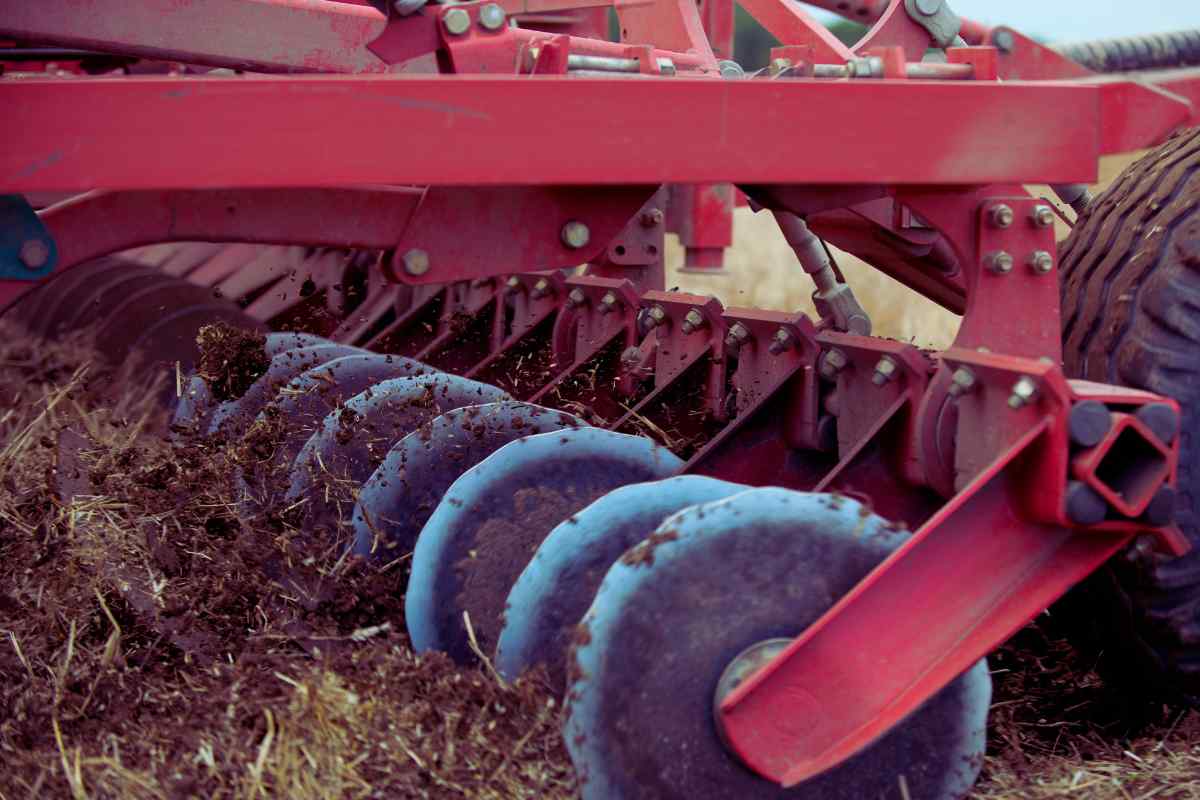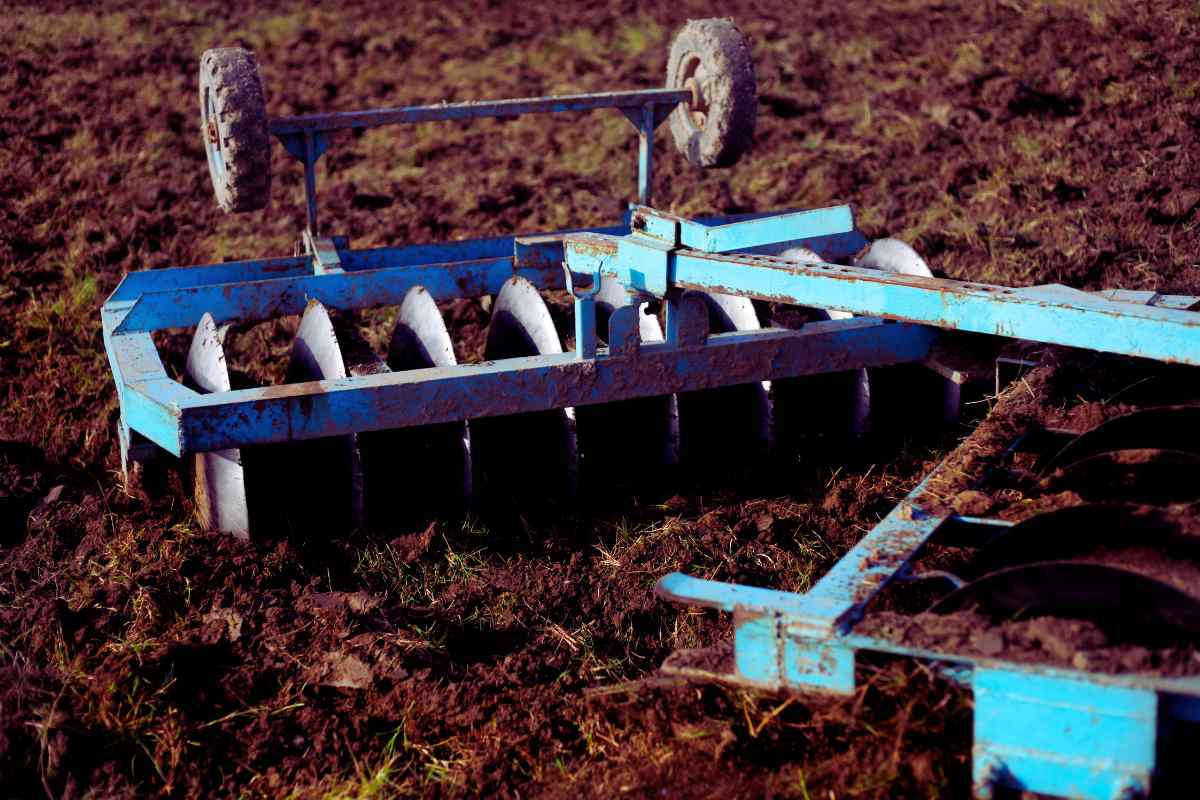Agricultural Equipment Maintenance: 10 Best Practices For Small Farms
Regular maintenance of agricultural equipment is essential for small farms to ensure efficiency and longevity, saving time while preventing costly breakdowns.

Maintaining agricultural equipment is crucial for the productivity and sustainability of small farms. With limited resources compared to larger operations, small farm owners must prioritize the efficiency and longevity of their machinery.
Keeping your equipment in good shape with regular maintenance isn't just about avoiding those expensive breakdowns. It also keeps everything running smoothly at peak efficiency. That means you save time and money in the long run.
By following these noteworthy practices, you can get the most out of your machinery, make it last longer, and avoid those frustrating delays caused by unexpected repairs.
Equipment Needing Maintenance
In small farms, a range of agricultural equipment requires regular maintenance to ensure efficient operation and longevity. Here are some common types of equipment that small farm owners typically need to maintain:
- Tractors: Just like a dependable farmhand, tractors need routine checkups to stay in top shape. This means looking at the engine, changing the oil, and making sure the tires are good.
- Plows: These require checks for wear and tear on blades and fittings to ensure they can effectively till the soil without issues.
- Harvesters: These machines, crucial during harvest season, need detailed checks on cutting mechanisms, belts, and conveyors.
- Planters And Seeders: Regularly check these to make sure they're dropping seeds at the right depth and spacing. You want consistent seeding for healthy crops!
- Sprayers: Keep an eye on your sprayers to ensure the nozzles and hoses aren't clogged. Proper care means even the application of pesticides or fertilizers for your plants.
- Mowers: For mowers, sharp blades are key for a clean cut. Sharpen the mower blade often, check its mounting, and clean the deck to keep your mower running at its best.
- Tillers: They require maintenance on their tines and engines to keep the soil turning efficiently.
- Hay Balers: These need checks on their tying mechanisms and bale compression functionalities to ensure they work efficiently during the haymaking process.
- Utility Vehicles: These workhorses haul and carry around the farm, so keep them running smoothly with regular engine checkups and tire care.
- Irrigation Systems: Water your crops efficiently by checking your irrigation system for clogged pipes, leaky connections, and malfunctioning sprinkler heads. This ensures smooth water flow and keeps your plants happy!
For the best service and maintenance, professionals bring the know-how and care that help your equipment last longer. Visiting Wickham Tractor is a smart choice because they not only provide quality machinery but also expert service to keep everything working at its best. Their team offers helpful advice and maintenance solutions to keep your farm running smoothly and avoid costly downtime.

Maintenance needs vary depending on your equipment's job and how often you use it. For a personalized maintenance plan, check the manufacturer's guide. It'll have all the details you need to keep your equipment running smoothly.
For even better performance, explore resources like Maupin's and other trusted suppliers. They offer a variety of parts and services dedicated to keeping your agricultural equipment in top shape.
Tips On Maintaining Farm Equipment
To ensure the longevity and optimal performance of small farm equipment, adhering to specific maintenance practices is crucial. Here are 10 best practices designed to help small farm owners keep their machinery in top condition:
1. Follow The Manufacturer's Service Guidelines
Each piece of equipment comes with a manufacturer-recommended service schedule that outlines when to perform certain maintenance tasks, such as oil changes, belt replacements, and other critical services.
Adhering to these guidelines ensures that the equipment operates safely and efficiently and may also be necessary to keep warranties valid. Consider creating a checklist based on the manufacturer's recommendations. This checklist can be laminated and kept near the equipment for easy access during routine maintenance checks.
2. Regularly Clean Equipment
Dirt, debris, and plant residues can significantly decrease equipment efficiency and even cause long-term damage if not cleaned off regularly. Soil and mud, for example, trap moisture that accelerates rust formation, while plant residue can impede the function of moving parts and restrict airflow, leading to elevated operating temperatures.
After each use, machines like yard ramps should be thoroughly cleaned, focusing on removing any material trapped in moving parts, around engines, or under the chassis. Plus, pay close attention to areas around radiator fins, which can become clogged with debris and restrict airflow, reducing the engine's cooling capacity. A low-pressure compressed air hose can be helpful for dislodging stubborn dirt and debris.
3. Conduct Pre-Use Inspections
Before starting any piece of farm equipment, a thorough inspection should be conducted to check for any signs of wear or damage. Getting your crew involved in checking equipment before they use it is a double win. Not only can they catch small issues before they become big problems, but it also makes them more invested in keeping the machinery in top shape. Plus, they'll be more aware of any potential safety risks.
Look for leaks, check hose connections, inspect belts for cracks, ensure that protective shields are in place, and verify that all lights and signals are functional. These inspections can prevent accidents and machinery breakdowns, which can be costly and disrupt farm operations.
4. Check Fluid Levels Frequently
Fluids such as engine oil, hydraulic fluid, and coolant are essential for the smooth operation of farm machinery. Low or dirty fluids can lead to engine damage, overheating, or poor hydraulic performance. So, don't skip those fluid checks and changes! Sticking to the manufacturer's schedule is essential for peak performance and avoiding mechanical trouble.
Investing in dipsticks with markings specific to your equipment can make checking fluid levels quicker and more accurate. Keeping a spare bottle of commonly used fluids on hand can also be helpful to top up fluids as needed.
5. Maintain And Sharpen Cutting Implements
Tools and machines that cut or break the soil, like plows, mowers, and harvesters, require sharp components to function efficiently. Dull blades or worn tines not only require more power to operate but also stress the machinery, leading to increased fuel consumption and faster wear. Regularly sharpening and replacing these components ensures they work effectively, providing clean cuts and reduced strain on the equipment.
Invest in high-quality sharpening stones or a honing tool specifically designed for your cutting implements. When sharpening, it's important to maintain the original angle of the blade to ensure optimal performance. Consider using a marker to track your progress. Sharpen until the marker is completely removed from the cutting edge.
6. Store Equipment Properly
Proper storage of agricultural equipment is key to extending its lifespan. Machinery should be stored in a clean, dry environment to protect it from the elements and reduce the risk of rust and corrosion. If indoor storage is not possible, using weatherproof covers can offer significant protection from moisture and sunlight.
Before storing your equipment, give it a thorough cleaning to remove any dirt, debris, or moisture that could cause rust. Consider draining fluids like oil and antifreeze if the equipment will be in storage for an extended period. To further prevent moisture build-up, elevate equipment slightly off the ground.
For loading and unloading pallets, hay, or equipment when you don’t have a fixed dock, many small farms rely on the yard ramps to create a safe, portable transition from ground to trailer. Choose ramps with serrated steel grating for traction, verify weight capacity for tractors and UTVs, and inspect hydraulics, decking, and wheels regularly. Proper storage—covered and off the ground—prevents corrosion and prolongs service life, turning your ramp into a long-term asset that reduces downtime during harvests and deliveries.
7. Keep Detailed Maintenance Records
Keeping a log of all maintenance activities helps track the health of your equipment over time. These records should include details of all routine checks, replacements, and any repairs made, along with the dates and any parts used. This documentation is invaluable for troubleshooting issues, planning future maintenance, and ensuring consistent performance across all machinery.
Dedicate a notebook or binder specifically for equipment maintenance records. Include the model and serial number for each piece of equipment for easy reference. Consider using digital tools or spreadsheets to manage your records, allowing for easier searching and organization. Regularly review your maintenance records to identify any trends or potential problems. This will help you anticipate future maintenance needs and avoid costly breakdowns.
8. Replace Worn Parts Promptly
Regular inspections will often reveal worn or damaged parts that need to be replaced. Promptly addressing these issues prevents further damage and maintains the equipment's functionality.
Pay close attention to parts that experience high wear and tear, such as belts, filters, and bearings. Look for signs of wear, like cracks, chips, or excessive looseness.
It's best to use high-quality replacement parts, which can often enhance the performance of the machinery and are usually a worthwhile investment over cheaper, lower-quality alternatives. If you are unsure about replacing a specific part, consult your user manual or a qualified mechanic for guidance.
9. Manage Tires And Wheels
For equipment reliant on mobility, maintaining the tires and wheels is essential. This includes ensuring that tires are properly inflated to the manufacturer's specified pressure, checking for wear or damage, and replacing them when necessary. Proper tire maintenance not only ensures better fuel efficiency but also prevents accidents caused by tire failure.
To effectively manage your tires and wheels, regularly inspect them for cuts, bulges, or signs of uneven wear. Invest in a reliable tire pressure gauge and make it a habit to check pressure before each use. Consider rotating tires periodically to ensure even wear and maximize their lifespan.
When replacing tires, choose a tread pattern suitable for your typical operating conditions. For example, if you frequently operate your equipment on muddy terrain, opt for a tread pattern designed for better traction in wet conditions.
10. Update Safety Features
The safety of operators is paramount, and maintaining the safety features of farm equipment is a critical responsibility. Regularly check and update features like lights, brakes, emergency shut-offs, and protective guards. This not only ensures the equipment meets safety regulations but also protects operators from potential injuries.
Conduct a pre-operation safety check before using any equipment. This should include testing all lighting systems, including headlights, taillights, and turn signals. Ensure brakes are functioning properly and stopping distances meet safety standards.
More importantly, any damaged or missing protective guards should be replaced before operating the equipment. By prioritizing safety measures, you can create a work environment that minimizes the risk of accidents and injuries.
By following these maintenance tips, your farm equipment will become a reliable workhorse. Less downtime and fewer repairs mean you can get more done and save money in the long run.
Takeaway
On a small farm, where every penny counts, keeping your equipment in top shape isn't just about making it last. It's about getting the most out of everything you have. Following these ten best practices will keep your machinery running like a champ so it can keep contributing to your farm's success.
Don't wait for trouble! Taking care of your equipment with regular maintenance is like an insurance policy. It might seem like a hassle now, but it prevents future headaches and keeps your equipment running strong for years to come.



Comments ()